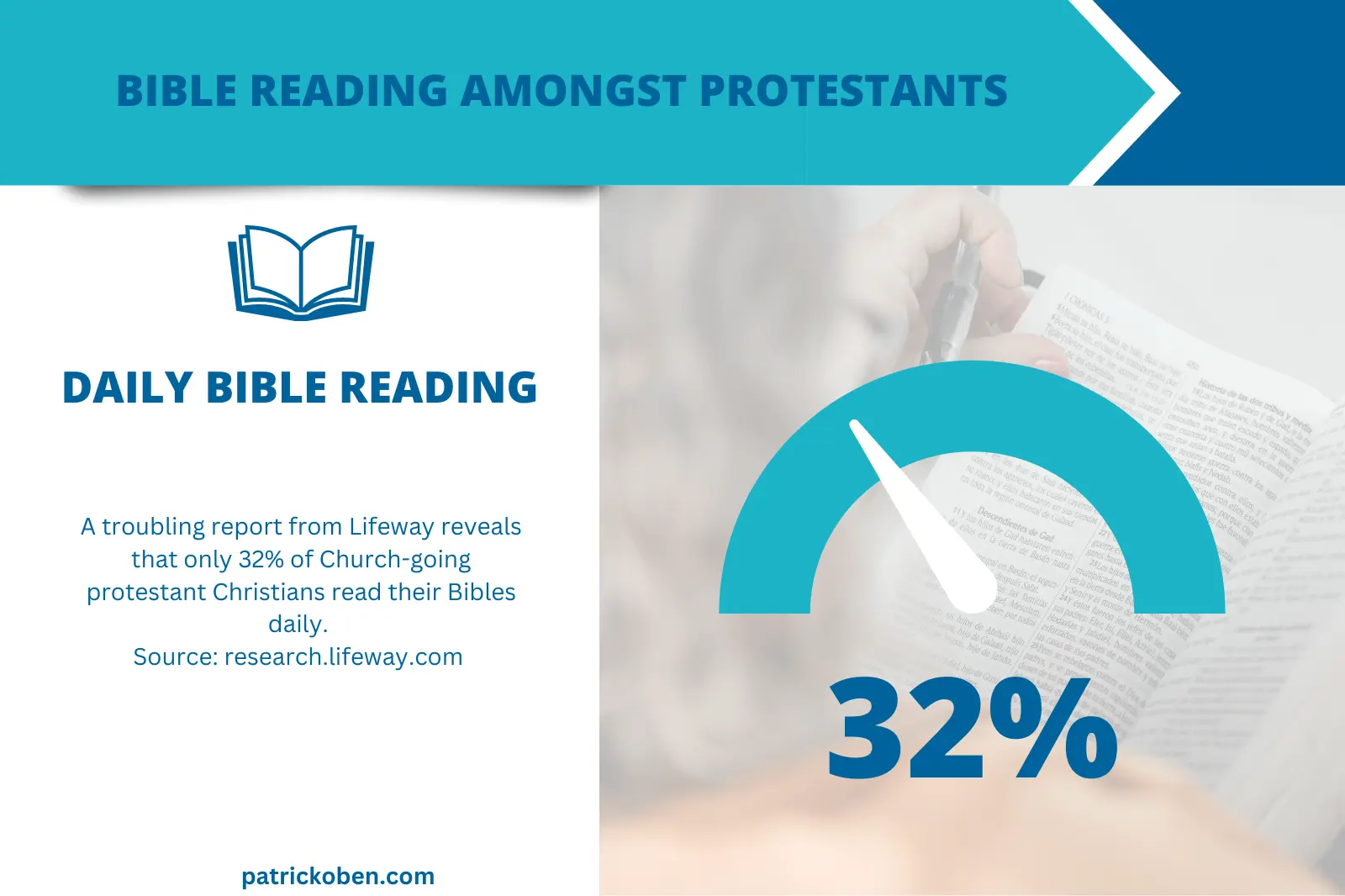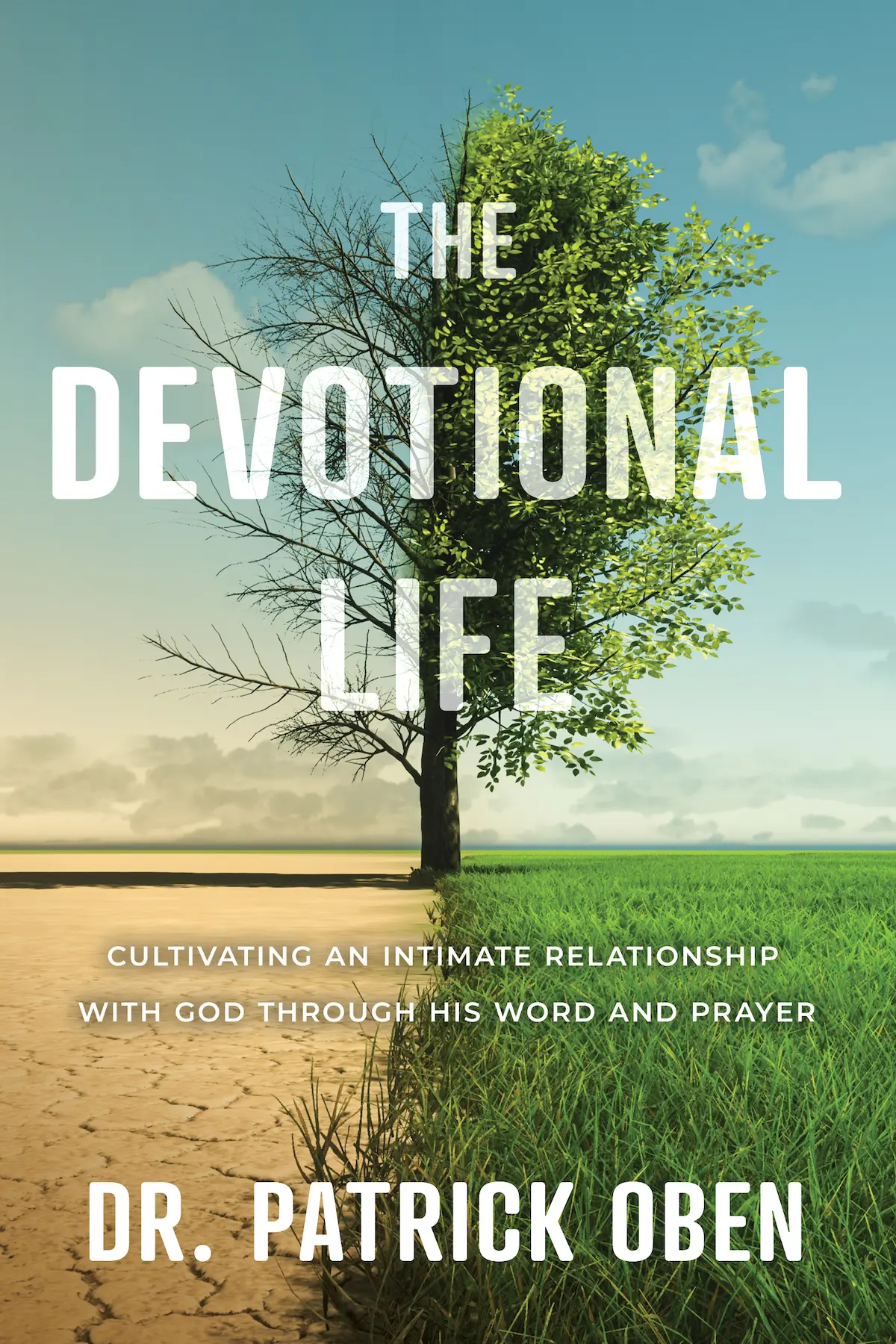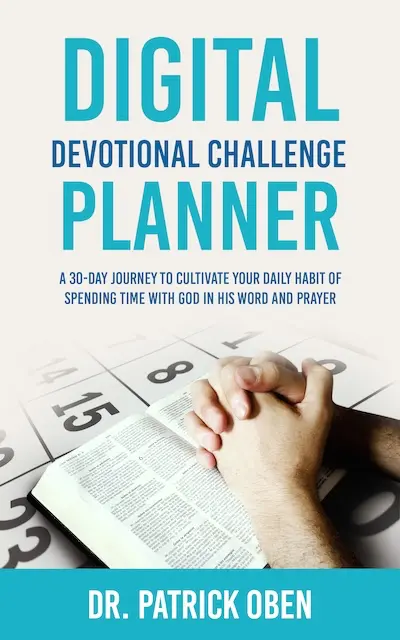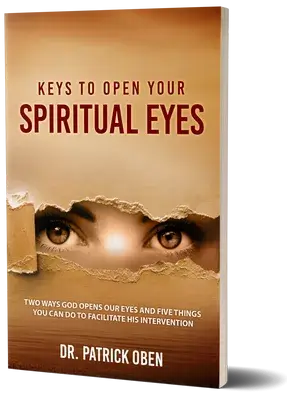A recent Lifeway research found that only 32% of protestant Christians read the Bible daily—12% rarely or have never read the Bible.
These figures are perplexing, and they make a strong statement: Bible reading is a pain point for many Christians. The solution to this vexing problem begins with a simple and clear understanding of what Bible reading really is.
What is Reading?
Reading is like walking, talking, or eating. We know what it is—at least in practice. A formal definition only highlights known facts we might have taken for granted. Because of this need for a reminder and the problematic nature of Bible reading, it is worth revisiting the meaning of reading.
According to the Oxford Dictionary, the verb to read means “look at and comprehend the meaning of (written or printed matter) by mentally interpreting the characters or symbols of which it is composed.” The keywords are:
- Look at (or sometimes touch) written or printed symbols
- Comprehend the meaning by mentally interpreting the sense communicated by those symbols.
The Merriam-Webster’s Dictionary defines the verb to read as “to receive or take in the sense of (letters, symbols, etc.), especially by right or touch.”
Bible reading does not differ from reading any other written literature.
What is Bible Reading?
Informed by the lexical definitions above, we defined Bible reading as looking at the written words of the Bible, comprehending their meaning, and receiving the knowledge communicated. This definition has three key facets, each associated with a specific problem and purpose.
1. Looking at the written words
To read, we must first be present with the words of the book: we must spend time with the book and open the page (paper or electronic). An unopened Bible is unread, and an unread Bible is of no profit to the owner thereof.
This spells out the first obstacle to Bible reading: no time to open the Book.
2. Comprehend the meaning of the text
Reading involves receiving the sense of what is read. We determine meaning in reading; We interpret no matter how superficial that determination or interpretation is. Therefore, reading involves exegesis(determination of meaning); whenever we read any text, including the Bible, we are engaged in exegesis (we are exegetes), whether or not we know it. Therefore, interpretation or exegesis is not restricted to in-depth Bible study. Instead, when we study, we go further and deeper in exegesis, which begins in reading.
3. Receive knowledge of what is communicated
We look and comprehend to know what the text is communicating. This knowledge is the ultimate end of the reading (see below).
Again, this second point defines the second major problem besetting Bible reading: many believers read the Bible but do not understand what they are reading. Looking at those words without comprehending the meaning is boring, frustrating, and overwhelming; the knowledge gained in reading is what satisfies.
Knowledge as the Desired Trophy of Reading
The lexical definitions of reading above make an essential point: reading leads us to comprehend meaning. Reading seeks to know what is written or being communicated. So the desired trophy of reading is knowledge.
We read books to receive knowledge of what is written and understand what is being communicated. Although this truth is simplistic at face value, its spiritual importance is crucial.
The immediate purpose of reading
Bible reading is a means to an end. God wants us to read the Bible not because He is pleased watching us read His Book. No! He wants us to read to receive the knowledge of what is written and understand what is in His Book.
Hence Peter says:
“But grow in grace, and the knowledge of our Lord and Saviour Jesus Christ. To him be glory both now and forever. Amen.” (2 Peter 3:18, KJV)
And Paul says:
“For this cause we also, since the day we heard it, do not cease to pray for you, and to desire that ye might be filled with the knowledge of his will in all wisdom and spiritual understanding;” (Colossians 1:9, KJV)
Therefore, acquiring knowledge, not the mere act of reading, is the immediate purpose of reading the Bible. It is the knowledge of God that causes changes, not flipping pages.
Two Forms of Bible Reading
In practice, Bible study often takes one of two forms: general and particular.
General
General Bible Reading includes every instance we read the Bible irrespective of the time spent reading, the number of verses read, or the purpose of reading. For example, we can read the Bible as part of our devotional time or during an in-depth Bible study. Or we could read the Bible in search of an answer to our question.
Particular
Often, Christians read the Bible as part of a larger plan to read through the entire Bible in a year. Sometimes, it could be portions of the Bible, like the New Testament, for a specific period, say, three or six months.
We consider this form of Bible reading one of the Approaches to Bible Study. Besides, we have an entire program titled “Reading Through the Bible in One or Two Years (RTB-1-2) and an annual conference dedicated to encouraging, inspiring, and equipping believers to adopt an organized approach to regularly reading God’s Book.
Bible Reading in Bible Days and Today
Paul told Timothy:
“I charge you by the Lord that this epistle be read unto all the holy brethren.” (1 Thessalonians 5:27, KJV)
This charge reveals an essential aspect of Bible reading in Bible days: the believers only heard the Bible read in a congregational setting by ministers; they were not privileged to have the Bible themselves. Our generation is so blessed—in fact, we are, in many respects, spoiled.
A Blessed Generation
Today, the YouVersion App, for example, gives us access to almost any English Translation out there. Similarly, I use the Logos Bible Software which has over ten thousand theological resources in my library just a click away.
Although we are spoiled with an incredible number of tools and aids, the statistics on Bible reading among Christians are dismal. And they are not getting any better. In their respected State of the Bible report 2022, the American Bible Society reported that only 10% of Americans who own a Bible read it daily outside of a Church service. A troubling 40% own Bibles but never read them outside of a Church or mass.
A Unique Problem
The believers in the Early Church or pre-printing era had a big problem—access to the Bible. They could not read the Bible when they wanted because of technical limitations in that era of human history. So they were forced to only hear it read during Church services.
The paradigm has shifted in our days. Although access is still a problem in some places, the primary concern for many believers today is not access to a Bible but unread Bibles: there are many unopened or unread Bibles in homes. Believers have Bibles but often only read them during service or only study it during Bible study services.
Putting it Together
When we read the Bible, just as reading this article, we look at the letters, interpret them, and receive knowledge. Reading the scriptures can be part of a specific organized approach to reading through the entire Bible in a year. Bible reading is a required first step in any Bible study. In fact, Bible reading is the beginning of Bible study. But knowing the what is the first step; knowing the why is even more important.
Our primary purpose is to help believers read the Bible. It is our pleasure and delight to assist you in resolving difficulties or guide you to read the Bible. To get help, please comment below or send us a message. Otherwise, we have suggested resources below to help you read God’s Book.
Recommended
- Bible Study for Everyone
- How to Study the Bible in Five Steps
- The Experiential Nature of the Knowledge of God
- Bible Study for Everyone
Free Mini E-book: From Spiritual Dryness to Flourishing







